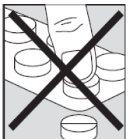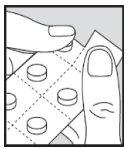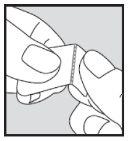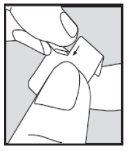
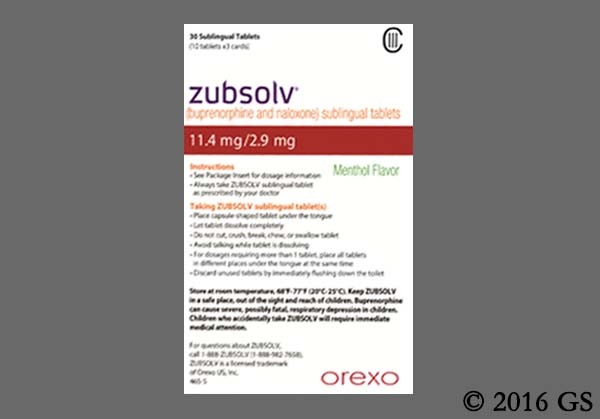
ЗУБСОЛЬВ 11,4 мг/2,9 мг СУБЛИНГВАЛЬНЫЕ ТАБЛЕТКИ

Спросите врача о рецепте на ЗУБСОЛЬВ 11,4 мг/2,9 мг СУБЛИНГВАЛЬНЫЕ ТАБЛЕТКИ

Инструкция по применению ЗУБСОЛЬВ 11,4 мг/2,9 мг СУБЛИНГВАЛЬНЫЕ ТАБЛЕТКИ
Введение
Инструкция: информация для пациента
Зубсольв 0,7 мг / 0,18 мг сублингвальные таблетки
Зубсольв 1,4 мг / 0,36 мг сублингвальные таблетки
Зубсольв 2,9 мг / 0,71 мг сублингвальные таблетки
Зубсольв 5,7 мг / 1,4 мг сублингвальные таблетки
Зубсольв 8,6 мг / 2,1 мг сублингвальные таблетки
Зубсольв 11,4 мг / 2,9 мг сублингвальные таблетки
бупренорфин/налоксон
Прочитайте внимательно всю инструкцию перед началом приема этого лекарства, поскольку она содержит важную информацию для вас.
- Сохраните эту инструкцию, поскольку вам может потребоваться прочитать ее снова.
- Если у вас есть какие-либо вопросы, проконсультируйтесь с вашим врачом или фармацевтом.
- Это лекарство было назначено только вам, и не передавайте его другим людям, даже если у них такие же симптомы, как у вас, поскольку оно может нанести им вред.
- Если вы испытываете побочные эффекты, проконсультируйтесь с вашим врачом или фармацевтом, даже если это побочные эффекты, которые не указаны в этой инструкции. См. раздел 4.
Содержание инструкции
- Что такое Зубсольв и для чего он используется
- Что вам нужно знать перед началом приема Зубсольва
- Как принимать Зубсольв
- Возможные побочные эффекты
- Хранение Зубсольва
- Содержание упаковки и дополнительная информация
1. Что такое Зубсольв и для чего он используется
Зубсольв содержит активные вещества бупренорфин и налоксон. Зубсольв используется для лечения зависимости от опиоидов (наркотиков), таких как героин или морфин, у наркозависимых людей, которые согласились пройти лечение от своей зависимости. Зубсольв используется у взрослых и подростков старше 15 лет, которые также получают медицинскую, социальную и психологическую поддержку.
Как действует Зубсольв?
Таблетка содержит бупренорфин, который отвечает за лечение зависимости от опиоидов (наркотиков). Она также содержит налоксон, который используется для затруднения неправильного использования лекарства внутривенно.
2. Что вам нужно знать перед началом приема
Зубсольв Не принимайте Зубсольв :
- если вы аллергичны к бупренорфину, налоксону или любому другому компоненту этого лекарства (указанному в разделе 6)
- если у вас есть тяжелые проблемы с дыханием
- если у вас есть тяжелые проблемы с печенью
- если у вас есть отравление алкоголем или у вас есть дрожь, потливость, тревога, путаница или галлюцинации, вызванные алкоголем
- если вы принимаете налтрексон или налмефен для лечения зависимости от алкоголя или опиоидов
Предостережения и меры предосторожности
- Неправильное использование, злоупотребление и несанкционированное распространение
Могут возникнуть тяжелые случаи инфекций с потенциально смертельным исходом, если Зубсольв используется неправильно, вводясь внутривенно.
Это лекарство может быть целью для людей, которые злоупотребляют рецептурными лекарствами, и должно храниться в безопасном месте, чтобы защитить его от кражи (см. раздел 5). Не давайте это лекарство никому другому. Оно может вызвать у них смерть или другой вред.
- Проблемы с дыханием(см. также «Не принимайте Зубсольв» выше)
Некоторые люди умерли от дыхательной недостаточности (неспособности дышать) потому, что они неправильно использовали это лекарство или принимали его в сочетании с другими депрессантами центральной нервной системы, такими как алкоголь, бензодиазепины (транквилизаторы) или другие опиоиды.
Лекарство должно использоваться с осторожностью у пациентов с предшествующими проблемами с дыханием
Это лекарство может вызвать тяжелую, потенциально смертельную дыхательную недостаточность у детей и людей, не зависимых от опиоидов, если они случайно или намеренно принимают его.
- Сонливость
Это лекарство может вызвать сонливость, особенно когда принимается с алкоголем или другими депрессантами центральной нервной системы (такими как транквилизаторы, седативные или гипнотические средства).
- Зависимость
Это лекарство может вызвать зависимость.
- Повреждение печени
Было сообщено о повреждении печени после приема бупренорфина/налоксона, особенно при неправильном использовании лекарства. Это также может быть вызвано вирусными инфекциями (хронический гепатит C), злоупотреблением алкоголем, анорексией или использованием других лекарств, которые могут повредить печень (см. раздел 4). Ваш врач может регулярно проводить анализ крови, чтобы контролировать состояние вашей печени.
Сообщите вашему врачу, если у вас были проблемы с печенью до начала лечения Зубсольвом.
- Симптомы абстиненции
Это лекарство может вызвать симптомы абстиненции, если принимается менее чем через 6 часов после приема опиоида с коротким действием (например, морфина, героина) или менее чем через 24 часа после приема опиоида с длительным действием, такого как метадон.
Зубсольв также может вызвать симптомы абстиненции, если его прием прекращается внезапно.
- Артериальное давление
Это лекарство может вызвать внезапное снижение артериального давления, что может привести к чувству головокружения, если встать слишком быстро, когда сидите или лежите.
- Дети и подростки
Вы можете находиться под более близким наблюдением вашего врача, если вам меньше 18 лет.
Дети младше 15 лет не должны принимать это лекарство.
- Диагностика не связанных с этим медицинских состояний
Это лекарство может маскировать симптомы боли, которые могут помочь в диагностике некоторых заболеваний. Не забудьте сообщить вашему врачу, если вы принимаете это лекарство.
Проконсультируйтесь с вашим врачом перед началом приема Зубсольваесли:
- у вас есть депрессия или другие заболевания, которые лечатся антидепрессантами.
Использование этих лекарств вместе с Зубсольвом может вызвать серотониновый синдром, потенциально смертельное заболевание (см. «Прием Зубсольва с другими лекарствами»)
- у вас есть проблемы с почками
- вы недавно перенесли травму головы или заболевание мозга
- у вас есть низкое артериальное давление, увеличенный размер предстательной железы или трудности с мочеиспусканием из-за сужения мочеиспускательного канала
- у вас есть недостаточная активность щитовидной железы, что может вызвать усталость или увеличение веса
- ваша надпочечная железа не функционирует правильно (например, болезнь Аддисона)
- у вас есть проблемы с желчными путями (например, желчный пузырь, общий желчный проток)
- вы пожилой человек
- вы ослаблены
Прием Зубсольва с другими лекарствами
Сообщите вашему врачу, если вы используете, недавно использовали или можете использовать любое другое лекарство.
Некоторые лекарства могут увеличить побочные эффекты Зубсольва и в некоторых случаях могут вызвать очень тяжелые реакции. Не принимайте другие лекарства, пока принимаете Зубсольв, без предварительной консультации с вашим врачом, особенно:
- антидепрессанты, такие как моклобемид, транилципромин, циталопрам, эсциталопрам, флуоксетин, флуvoxамин, пароксетин, сертралин, дулоксетин, венлафаксин, амитриптилин, доксепин или тримипрамин. Эти лекарства могут взаимодействовать с Зубсольвом, и вы можете испытать симптомы, такие как мышечные сокращения, включая мышцы, которые контролируют движение глаз, агитация, галлюцинации, кома, чрезмерное потоотделение, дрожь, усиление рефлексов, увеличение мышечного тонуса, температура тела выше 38 °C. Свяжитесь с вашим врачом, если вы испытываете эти симптомы.
- Налтрексон и налмефен(лекарства, используемые для лечения зависимости) могут предотвратить терапевтические эффекты Зубсольва. Не принимайте их одновременно с лечением Зубсольвом, поскольку вы можете испытать внезапное начало сильной и длительной абстиненции.
- Бензодиазепины(используемые для лечения тревоги или расстройств сна) такие как диазепам, темазепам, алпразолам. Ваш врач укажет вам правильную дозу. Прием неправильных доз бензодиазепинов может вызвать смерть от дыхательной недостаточности (неспособности дышать).
- Другие лекарства, которые могут вызвать сонливость, используемые для лечения заболеваний, таких как тревога, бессонница, судороги или эпилептические приступы, боль и другие психические расстройства. Этот тип лекарств снижает ваш уровень бдительности, делая вождение и использование машин опасным для вас. Они также могут вызвать депрессию центральной нервной системы, что очень серьезно. Ниже приведен список примеров такого типа лекарств:
- другие лекарства, содержащие опиоиды, такие как метадон, определенные обезболивающие и противокашлевые средства
- некоторые антидепрессанты (используемые для лечения депрессии) такие как изокарбоксазид, фенелзин, селегилин, транилципромин, валпроат и ингибиторы моноаминоксидазы (ИМАО), поскольку они могут увеличить эффекты этого лекарства
- антагонисты гистаминовых рецепторов, вызывающие сонливость (используемые для лечения аллергических реакций) такие как дифенгидрамин и хлорфенирамин
- барбитураты (используемые для индукции сна или седации) такие как фенобарбитал, секобарбитал
- транквилизаторы (используемые для индукции сна или седации) такие как гидрат хлораля
- клонидин (используемый для лечения артериальной гипертонии) и связанные с ним лекарства, поскольку они могут продлить эффекты этого лекарства
- антиретровирусные лекарства (используемые для лечения ВИЧ) такие как ритонавир, нельфинавир, индинавир, поскольку они могут увеличить эффекты этого лекарства
- некоторые противогрибковые лекарства (используемые для лечения грибковых инфекций) такие как кетоконазол, итраконазол и определенные антибиотики, поскольку они могут продлить эффекты этого лекарства
- некоторые лекарства могут уменьшить эффект Зубсольва. Это включает лекарства, используемые для лечения эпилепсии (такие как карбамазепин и фенитоин) и лекарства, используемые для лечения туберкулеза (рифампицин)
Использование Зубсольва с пищей, напитками и алкоголем
Алкоголь может увеличить сонливость и может увеличить риск дыхательной недостаточности, если принимается с Зубсольвом. Не принимайте Зубсольв вместе с алкоголем.Не глотайте или не принимайте пищу или напитки, пока таблетка не растворится полностью.
Беременность и лактация
Неизвестны риски использования Зубсольва у беременных женщин. Сообщите вашему врачу, если вы беременны или планируете стать беременной. Ваш врач решит, следует ли продолжать лечение альтернативным лекарством.
Когда принимаются во время беременности, особенно в конце беременности, лекарства, такие как Зубсольв, могут вызвать симптомы абстиненции, включая проблемы с дыханием, у вашего новорожденного ребенка. Это может появиться несколько дней после рождения.
Не кормите грудью, пока принимаете это лекарство, поскольку Зубсольв проникает в грудное молоко.
Спросите вашего врача или фармацевта перед приемом любого лекарства.
Вождение и использование машин
Зубсольв может вызвать сонливость, головокружение или нарушение мышления. Это может произойти чаще в первые недели лечения, когда доза регулируется, но также может произойти, если вы принимаете алкоголь или другие седативные лекарства одновременно с Зубсольвом. Не водите, не используйте инструменты или машины и не занимайтесь опасными hoạtностями, пока не узнаете, как это лекарство влияет на вас.
Зубсольв содержит натрий
Это лекарство содержит менее 1 ммоль натрия (23 мг) на дозу; это означает, что оно практически «не содержит натрия».
3. Как принимать Зубсольв
Ваше лечение назначено и контролируется врачами с опытом лечения наркозависимости.
Ваш врач определит лучшую дозу для вас. Во время лечения врач может регулировать дозу в зависимости от вашей реакции.
Следуйте точно инструкциям по приему этого лекарства, указанным вашим врачом или фармацевтом. В случае сомнений проконсультируйтесь с вашим врачом или фармацевтом.
Начало лечения
Рекомендуемая начальная доза для взрослых и подростков старше 15 лет составляет:
- одна таблетка Зубсольв 1,4 мг / 0,36 мг в день или
- одна таблетка Зубсольв 2,9 мг / 0,71 мг в день
Может быть назначена дополнительная таблетка Зубсольв 1,4 мг / 0,36 мг или 2,9 мг/0,71 мг в первый день, в зависимости от ваших потребностей.
Существуют другие концентрации для использования вашим врачом, который решит, какой лучший курс лечения для вас. Это может включать прием комбинации разных концентраций, но ваша суточная доза не должна превышать 17,2 мг бупренорфина.
Явные признаки абстиненции должны быть очевидны перед приемом первой дозы Зубсольва. Оценка вашего врача, готовы ли вы к лечению, определит время вашей первой дозы Зубсольва.
- Начало лечения Зубсольвом, если вы зависим от героина:
Если вы зависим от героина или опиоида с коротким действием, ваша первая доза Зубсольва должна быть принята, когда появятся признаки абстиненции, но не менее чем через 6 часов после последнего приема опиоидов
- Начало лечения Зубсольвом, если вы зависим от метадона:
Если вы принимали метадон или опиоид с длительным действием, желательно снизить дозу метадона ниже 30 мг/день перед началом лечения Зубсольвом. Первая доза Зубсольва должна быть принята, когда появятся признаки абстиненции, но не менее чем через 24 часа после последнего приема метадона
Прием Зубсольва
- Принимайте дозу один раз в день или как указал ваш врач.
- Извлеките таблетку, как описано ниже. Откройте блистер непосредственно перед приемом дозы. Не открывайте его никогда заранее, поскольку таблетка чувствительна к влаге.
- Поместите таблетки под язык.
- Держите таблетки под языком, пока они не растворятся полностью.
- Не жуйте и не глотайте таблетки, поскольку лекарство не подействует, и могут появиться симптомы абстиненции.
- Не принимайте пищу или напитки, пока таблетка не растворится полностью. Хотя вы можете заметить, что большая часть таблетки растворяется в течение 40 секунд, таблетка может потребовать от 5 до 10 минут, чтобы полностью исчезнуть из вашего рта.
Как извлечь таблетку из блистера
|
|
|
|
|
|
|
|
Коррекция дозы и поддерживающее лечение
Ваш врач может увеличить дозу Зубсольва, которую вы принимаете, в зависимости от ваших потребностей. Если вы считаете, что эффект Зубсольва слишком сильный или слишком слабый, проконсультируйтесь с вашим врачом или фармацевтом. Максимальная суточная доза составляет 17,2 мг.
После периода успешного лечения может быть согласовано с вашим врачом постепенное снижение дозы до меньшей поддерживающей дозы.
Прекращение лечения
Не изменяйте лечение никаким образом и не прекращайте лечение без разрешения врача, который вас лечит.
В зависимости от вашей ситуации доза Зубсольва может продолжать снижаться под близким медицинским наблюдением до его отмены.
Если вы приняли слишком много Зубсольва
Если вы или другой человек приняли слишком много этого лекарства, необходимо немедленно обратиться или быть доставленным в центр неотложной помощи или больницу для получения лечения, поскольку передозировка Зубсольвом может вызвать тяжелые и потенциально смертельные проблемы с дыханием.
Симптомы передозировки могут включать более медленное и слабое дыхание, чем обычно, чувство более сильной сонливости, чем обычно, уменьшение размера зрачков, низкое артериальное давление, тошноту, рвоту и/или трудности с речью.
Если вы пропустили прием Зубсольва
Сообщите вашему врачу как можно скорее, если вы пропустили дозу.
Если вы прекратили лечение Зубсольвом
Не изменяйте лечение никаким образом и не прекращайте его без разрешения врача, который вас лечит. Внезапное прекращение лечения может вызвать симптомы абстиненции.
Если у вас есть какие-либо другие вопросы о использовании этого лекарства, проконсультируйтесь с вашим врачом или фармацевтом.
4. Возможные побочные эффекты
Как и все лекарства, это лекарство может вызывать побочные эффекты, хотя не все люди испытывают их.
Сообщите своему врачу немедленно или обратитесь за медицинской помощью, если вы испытываете серьезные побочные эффекты, такие как:
- отек лица, губ, языка или горла, который может вызвать затруднение глотания или дыхания, крапивница/тяжелая кожная сыпь. Это могут быть признаки опасной для жизни аллергической реакции
- сонливость и отсутствие координации, размытое зрение, затруднение речи, невозможность хорошо или ясно мыслить, или дыхание намного медленнее, чем обычно для вас
- сильная усталость, зуд с желтым цветом кожи или глаз. Это могут быть симптомы повреждения печени
- видение или слышание вещей, которые не существуют (галлюцинации)
Другие побочные эффекты
Очень частые побочные эффекты(которые могут возникать у более 1 из 10 человек):
- бессонница (затруднение засыпания)
- головная боль
- запор, тошнота
- чрезмерное потоотделение
- синдром отмены
Частые побочные эффекты(которые могут возникать у до 1 из 10 человек):
- симптомы, подобные симптомам гриппа, инфекция, боль в горле и затруднение глотания, насморк
- тревога, депрессия, снижение либидо, нервозность, аномальные мысли
- мигрень, головокружение, обморок, повышение мышечного тонуса, онемение, сонливость
- повышение слезотечения (слезящиеся глаза) или другие нарушения слезных желез
- повышение артериального давления, покраснение
- повышение кашля
- боль в животе, боль в желудке или другие желудочные расстройства, диарея, метеоризм, рвота
- кожная сыпь, зуд, крапивница
- боль в спине, суставная боль, мышечная боль, судороги в ногах (мышечный спазм)
- нарушения мочеиспускания
- затруднение достижения или поддержания эрекции
- слабость, боль в груди, озноб, лихорадка, общее чувство недомогания, боль, отек (руки и ноги)
- нарушение функции печени, потеря веса
- случайные травмы, вызванные потерей бдительности или координации
Редкие побочные эффекты(которые могут возникать у до 1 из 100 человек):
- анормальные анализы крови, воспаление лимфатических узлов
- аномальные сны, агитация, потеря интереса, деперсонализация (не чувствовать себя самим собой), зависимость от лекарств, чрезмерное чувство благополучия, чувства враждебности
- амнезия (нарушения памяти), судороги (припадки), речевые расстройства, тремор
- воспаление или инфекция глаз, сужение зрачков
- учащенное или замедленное сердцебиение, инфаркт миокарда (сердечный приступ), сердцебиение, чувство сдавления в груди
- пониженное артериальное давление
- астма, одышка, зевота
- боль и язвы во рту, изменение цвета языка
- акне, выпадение волос, сухая или шелушащаяся кожа, узлы на коже
- воспаление суставов
- протеины в моче, инфекция мочевыводящих путей, затруднение мочеиспускания, болезненное или затрудненное мочеиспускание, кровь в моче, почечные камни
- нарушения менструального цикла или влагалищные проблемы, аномальная эякуляция
- чувствительность к теплу или холоду
- тепловой удар
- чрезмерная мышечная активность
- потеря аппетита
Неизвестная частота(не может быть оценена на основе доступных данных):
- замедленное или затрудненное дыхание
- повреждение печени с или без желтухи
- галлюцинации
- отек лица и горла или потенциально смертельные аллергические реакции, снижение артериального давления при изменении положения тела
- внезапный синдром отмены, вызванный приемом лекарства слишком быстро после употребления незаконных опиоидов
- синдром отмены у новорожденных
Неправильное использование этого лекарства путем инъекции может вызвать симптомы отмены, инфекции, другие кожные реакции и потенциально серьезные проблемы с печенью (см. раздел 2, Предупреждения и меры предосторожности).
Сообщение о побочных эффектах
Если вы испытываете любой побочный эффект, проконсультируйтесь с вашим врачом или фармацевтом, даже если это возможные побочные эффекты, которые не указаны в этом описании. Вы также можете сообщить об этом напрямую через систему мониторинга безопасности лекарств в России. Сообщая о побочных эффектах, вы можете внести свой вклад в предоставление более полной информации о безопасности этого лекарства.
5. Хранение Зубсольва
Храните это лекарство в недоступном для детей месте.
Не используйте это лекарство после даты истечения срока годности, указанной на упаковке и блистере после даты "CAD". Дата истечения срока годности - последний день месяца, указанного на упаковке.
Храните в оригинальной упаковке при температуре ниже 25 °C для защиты от влаги.
Зубсольв может быть целью для людей, которые злоупотребляют рецептурными лекарствами. Храните это лекарство в безопасном месте, чтобы избежать кражи.
Храните блистер в безопасности.
Никогда не открывайте блистер заранее.
Никогда не принимайте это лекарство на виду у детей.
В случае случайного приема или подозрения на прием немедленно обратитесь в отделение неотложной помощи.
Лекарства не должны выбрасываться в канализацию или в мусор. Спросите у вашего фармацевта, как правильно утилизировать упаковку и лекарства, которые вам больше не нужны. Таким образом, вы поможете защитить окружающую среду.
6. Содержание упаковки и дополнительная информация
Состав Зубсольва
Активные вещества - бупренорфин и налоксон.
Каждый сублингвальный таблетка 0,7 мг / 0,18 мг содержит 0,7 мг бупренорфина (в виде гидрохлорида) и 0,18 мг налоксона (в виде гидрохлорида дигидрата).
Каждый сублингвальный таблетка 1,4 мг / 0,36 мг содержит 1,4 мг бупренорфина (в виде гидрохлорида) и 0,36 мг налоксона (в виде гидрохлорида дигидрата).
Каждый сублингвальный таблетка 2,9 мг / 0,71 мг содержит 2,9 мг бупренорфина (в виде гидрохлорида) и 0,71 мг налоксона (в виде гидрохлорида дигидрата).
Каждый сублингвальный таблетка 5,7 мг / 1,4 мг содержит 5,7 мг бупренорфина (в виде гидрохлорида) и 1,4 мг налоксона (в виде гидрохлорида дигидрата).
Каждый сублингвальный таблетка 8,6 мг / 2,1 мг содержит 8,6 мг бупренорфина (в виде гидрохлорида) и 2,1 мг налоксона (в виде гидрохлорида дигидрата).
Каждый сублингвальный таблетка 11,4 мг / 2,9 мг содержит 11,4 мг бупренорфина (в виде гидрохлорида) и 2,9 мг налоксона (в виде гидрохлорида дигидрата).
Другие компоненты - маннитол, ангидрид лимонной кислоты, цитрат натрия, микрокристаллическая целлюлоза, кроскармеллоза натрия, сукралоза, левоментол, коллоидный анидрид кремнезема и стеарилфумарат натрия.
Внешний вид Зубсольва и содержание упаковки
Зубсольв сублингвальные таблетки выпускаются в шести разных дозировках, различимых по форме и гравировке:
Концентрация таблеток Зубсольва (бупренорфин/налоксон) | Описание таблеток Зубсольва | Гравировка на таблетках Зубсольва | Внешний вид |
0,7 мг / 0,18 мг | Таблетка белая, овальная, 6,8 мм в длину и 4,0 мм в ширину | “.7” на одной стороне |
|
1,4 мг / 0,36 мг | Таблетка белая, треугольная, 7,2 мм в высоту и 6,9 мм в ширину | “1.4” на одной стороне |
|
2,9 мг / 0,71 мг | Таблетка белая, в форме буквы D, 7,3 мм в высоту и 5,65 мм в ширину | “2.9” на одной стороне |
|
5,7 мг / 1,4 мг | Таблетка белая, круглая, 7 мм в диаметре | “5.7” на одной стороне |
|
8,6 мг / 2,1 мг | Таблетка белая, в форме ромба, 9,5 мм в длину и 8,2 мм в ширину | “8.6” на одной стороне |
|
11,4 мг / 2,9 мг | Таблетка белая, в форме капсулы, 10,3 мм в длину и 8,2 мм в ширину | “11.4” на одной стороне |
|
Все таблетки будут доступны в упаковках по 7, 28 и 30 таблеток, в алюминиевых блистерах.
Возможно, не все дозировки и размеры упаковок будут выпускаться.
Владелец разрешения на маркетинг
Orexo AB
Box 303
751 05 Уппсала
Швеция
Производитель
Orexo AB
Virdings allé 32 A Уппсала 751 05
Швеция
Дата последнего обновления этого описания:
Подробная информация о этом лекарстве доступна на сайте Европейского агентства по лекарственным средствам: http://www.ema.europa.eu/.
- Страна регистрации
- Активное вещество
- Требуется рецептДа
- Производитель
- Информация носит справочный характер и не является медицинской рекомендацией. Перед приемом любых препаратов проконсультируйтесь с врачом. Oladoctor не несет ответственности за медицинские решения, принятые на основе этого контента.
- Аналоги ЗУБСОЛЬВ 11,4 мг/2,9 мг СУБЛИНГВАЛЬНЫЕ ТАБЛЕТКИФорма выпуска: ПОДЪЯЗЫЧНАЯ ТАБЛЕТКА, 2 мг/0,5 мгАктивное вещество: buprenorphine, combinationsПроизводитель: Aurovitas Spain, S.A.U.Требуется рецептФорма выпуска: ПОДЪЯЗЫЧНАЯ ТАБЛЕТКА, 8 мг/2 мгАктивное вещество: buprenorphine, combinationsПроизводитель: Aurovitas Spain, S.A.U.Требуется рецептФорма выпуска: ПОДЪЯЗЫЧНАЯ ТАБЛЕТКА, 12 мг/3 мгАктивное вещество: buprenorphine, combinationsПроизводитель: Indivior Europe LimitedТребуется рецепт
Аналоги ЗУБСОЛЬВ 11,4 мг/2,9 мг СУБЛИНГВАЛЬНЫЕ ТАБЛЕТКИ в других странах
Лучшие аналоги с тем же действующим веществом и терапевтическим эффектом.
Аналог ЗУБСОЛЬВ 11,4 мг/2,9 мг СУБЛИНГВАЛЬНЫЕ ТАБЛЕТКИ в Ukraine
Врачи онлайн по ЗУБСОЛЬВ 11,4 мг/2,9 мг СУБЛИНГВАЛЬНЫЕ ТАБЛЕТКИ
Консультация по дозировке, побочным эффектам, взаимодействиям, противопоказаниям и продлению рецепта на ЗУБСОЛЬВ 11,4 мг/2,9 мг СУБЛИНГВАЛЬНЫЕ ТАБЛЕТКИ – по решению врача и с учетом местных правил.




